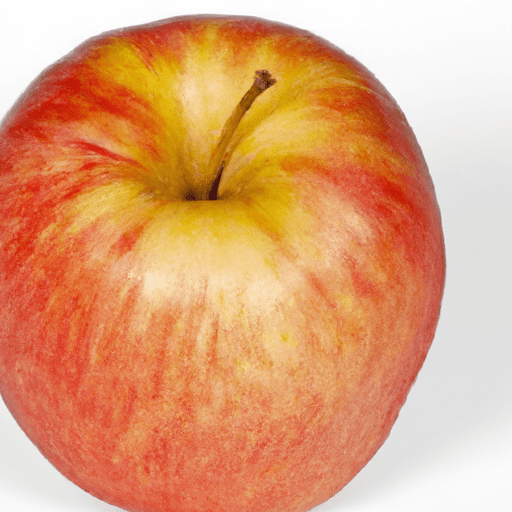Braeburn Apples: A Burst of Tartness in Every Bite
If you’re a fan of apples, you’ve probably encountered the tantalizing Braeburn apple. With its distinctive tartness and crunch, this apple is a favorite among both chefs and home cooks alike. In this blog post, we’ll delve into the world of Braeburn apples, exploring their taste, common uses in cooking, nutritional value, and even some interesting history and facts. So grab an apple and let’s get started!
Taste the Tangy Sweetness
Braeburn apples are known for their unique flavor profile that strikes a delightful balance between tartness and sweetness. When you take a bite, you’ll be greeted with an explosion of tangy juice, followed by a hint of sweetness that lingers on your taste buds. This intriguing combination makes Braeburn apples perfect for those who enjoy a little tartness in their fruit.
Versatile in the Kitchen
One of the greatest joys of cooking with Braeburn apples is their versatility. They hold their shape well during cooking, making them ideal for both savory and sweet dishes. Here are a few popular ways to incorporate Braeburn apples into your culinary creations:
Baked Goods: Add a twist to your apple pies, tarts, or crumbles by using Braeburn apples. Their firm texture ensures that they won’t turn mushy during baking, while their tartness adds a delightful contrast to sweet pastries.
Sauces and Chutneys: Braeburn apples bring a vibrant flavor to sauces and chutneys, especially when paired with warm spices like cinnamon and nutmeg. These sauces can be drizzled over roasted meats, spooned onto cheese platters, or even used as a glaze for roasted vegetables.
Salads: Slice or dice a Braeburn apple and toss it into your favorite salads for a refreshing touch. The tartness of the apple pairs beautifully with peppery greens, tangy dressings, and creamy cheeses.
Snacks: Of course, Braeburn apples are also delicious on their own as a healthy snack. Cut them into slices and enjoy them as-is, or pair them with your favorite nut butter for an extra indulgence.
Nutritional Powerhouse
Aside from their delightful taste and culinary uses, Braeburn apples are also packed with nutritional benefits. Here’s a snapshot of what you can expect from these tangy fruits:
Fiber: Braeburn apples are an excellent source of dietary fiber, which can help promote healthy digestion and keep you feeling fuller for longer.
Vitamins and Minerals: These apples contain a variety of vitamins and minerals, including vitamin C, which supports immune function, and potassium, which is essential for heart health.
Antioxidants: Braeburn apples are rich in antioxidants, such as flavonoids and polyphenols, which help protect your cells from damage caused by harmful free radicals.
Fun Facts and History
Before we wrap up, let’s explore some fascinating facts about Braeburn apples:
The Braeburn apple is named after Braeburn Orchard in New Zealand, where it was first discovered in the 1950s.
Initially, the Braeburn apple wasn’t widely popular until it made its way to the United States in the early 1980s. Since then, its popularity has soared, and it can now be found in markets across the world.
Braeburn apples are not only delicious but also known for their excellent storage capability. When stored in a cool and dry place, they can easily last for several months without losing their flavor or texture.
The crisp texture and tangy flavor of Braeburn apples make them a popular choice for cider production. They add a refreshing burst of acidity to the drink.
So there you have it - a comprehensive guide to Braeburn apples. From their tangy sweetness to their culinary versatility and nutritional benefits, these apples deserve their place in your kitchen. So the next time you’re shopping for apples, be sure to grab a few Braeburns and explore the delightful world of tart and sweet flavors.
Braeburn Apples
Origin: The Braeburn apple is believed to have originated in New Zealand in the late 1940s. It was discovered as a chance seedling by farmer O. Moran in the Braeburn orchard in Waiwhero, Upper Moutere, Nelson.
Common Uses: Braeburn apples are known for their crisp texture, aromatic flavor, and sweet-tart taste. They are popular for eating fresh and are also suitable for baking, juicing, and preserving. They can be used in salads, pies, tarts, cakes, and sauces.
Nutritional Benefits: Braeburn apples provide a variety of nutrients. They are a good source of dietary fiber, vitamin C, and potassium. Apples are also low in calories and fat, making them a healthy snack choice.
Unique Properties: One of the unique properties of Braeburn apples is their long storage life. They can be stored in a cool environment for up to several months without losing their crispness or flavor. Additionally, they have a distinctive bright red color with a greenish-yellow background.
Historical Significance: Braeburn apples became commercially available in the 1950s. Initially, they were exported to the United Kingdom, and later, their popularity spread to other countries. Today, they are widely grown in various parts of the world, including New Zealand, the United States, Chile, and European countries.




Use the share button below if you liked it.
It makes me smile, when I see it.